The Last Stand: Aftermath Review (PS5) – Make It Count
Zombie games are becoming analogous to an actual zombie apocalypse. It starts off small, but soon the virus spreads and next you know, we’re inundated with them. Infected, Ridden, whatever they’re called, it’s still a tried and tested framework to put a game around. In that regard, The Last Stand: Aftermath is no different. It’s the zombie apocalypse, the world is over, you know the beats.
What it does do, however, is put a spin on the survival aspect. Namely in that players won’t survive, per se. Each “volunteer” you play as is infected and, as such, will die. It’s just up to the player to see how long they can keep them going for. That’s right, The Last Stand is roguelike-ish, much to my surprise.
Yet whilst a good concept, does it get bogged down with too many elements from other types of games? Gear up, brace yourselves, and let’s find out…
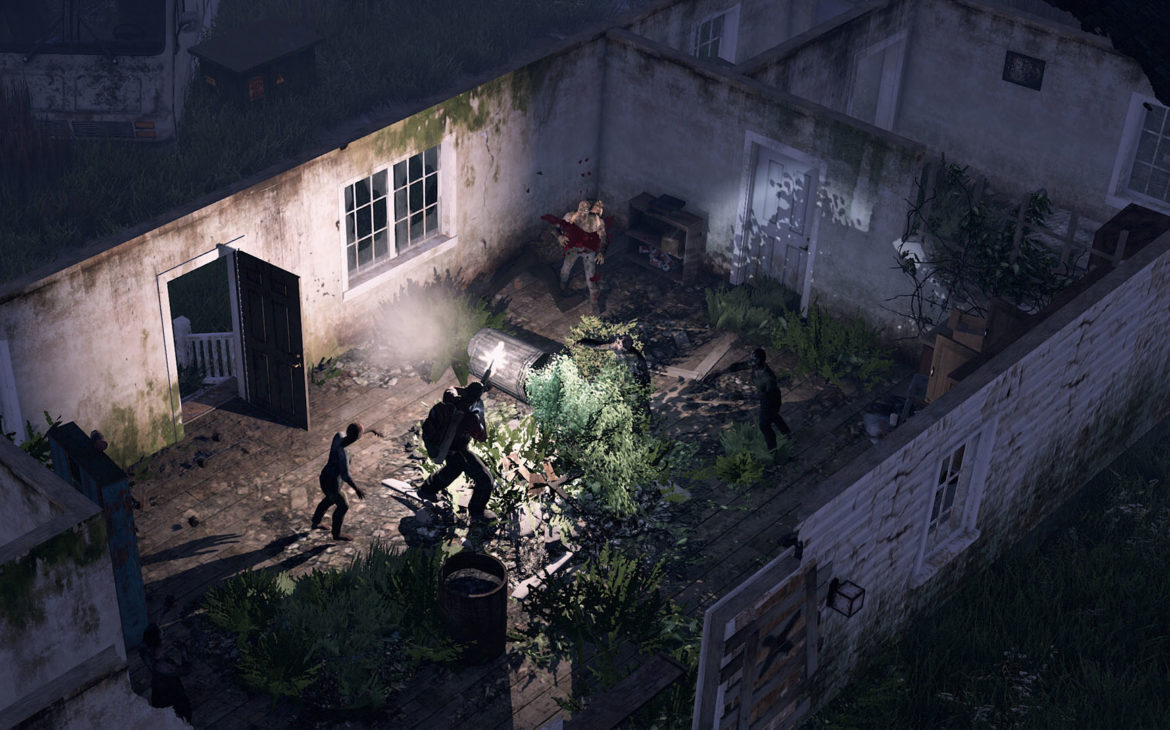
It’s The End Of The World As We Already Know It
It’s a zombie apocalypse. Glib as it sounds, that’s the premise behind The Last Stand. The world’s gone to shit, the cashier you remember from the supermarket is now trying to eat your face, and humanity is on the brink of extinction. Thankfully, we don’t get the preachy, “Maybe we’ve had our time” nonsense to kill the mood. Being infected doesn’t outright kill/change people, and there’s an antiviral agent out there that keeps infection temporarily at bay.
Set fifteen years after the outbreak, humans are living in makeshift camps and outposts dotted around the country. The infection is mutating the Infected (because “zombies” is so passe), antiviral agents are running low, and the powers that be have all but disappeared. Scattered about the lands are resources, but these are few and far between. Survivors can’t waste anymore men or supplies in finding more. Sounds like a right catch 22, doesn’t it?
Well, there’s a solution, but it’s a drastic one. The Last Stand is a very on the nose title, because for the volunteers sent out into the fray, it is quite literally that.
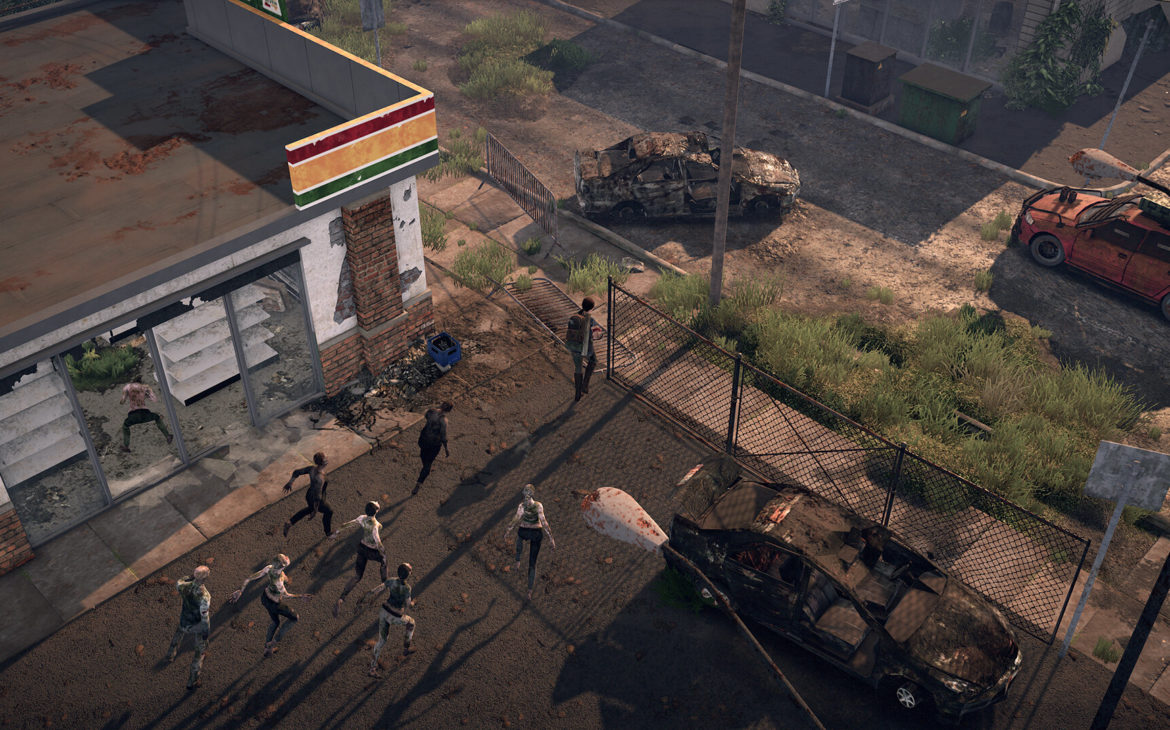
Don’t Get Too Attached
The hook behind The Last Stand, and what makes it a roguelike, is that you die. But rather than some mystical resurrection-type gimmick, players get a fresh character upon death. Seems a bit callous, but there’s a reason behind it: each volunteer is infected. Time is running out, so why not be made useful before losing all semblance of humanity.
Kitted out with a weapon or two, each volunteer starts their run at The End, a base located on the outskirts of a city. With use of the company car, each trip out sees players take their latest volunteer as far as they can before dying. The car gets picked up on death (which seems like an odd mechanic), which allows for the next participant to make use of it.
There isn’t a timer per se, but volunteers have one health bar, and an infection bar. Obviously death is pretty explanatory, but it’s the infection you want to watch out for. An antiviral injection will halt its progress temporarily, but staying alive only aids its takeover. There are pros and cons, which we’ll look at, but that’s the roguelike element of the game: keep going until you die or succumb to the hordes.
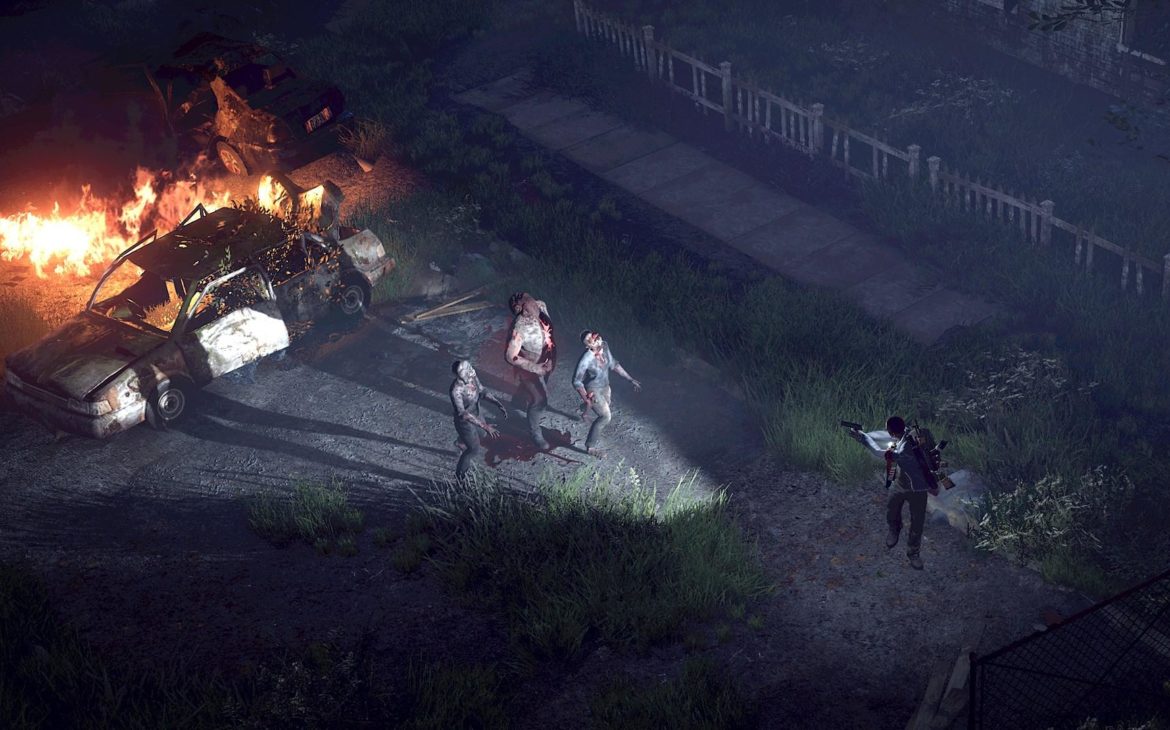
You Die, So That We May Live
Whilst it does sound like a fruitless endeavour, it’s actually quite fun in practice. Just because this randomly named survivor is inevitably dying, it doesn’t mean you can’t invest in their longevity.
Fortunately, this is made easier by how The Last Stand plays. It’s a top down-ish, twinstick shooter akin to Dead Nation, albeit with a Last of Us skin. Each area you move on to is procedurally generated, but you’ll become familiar with the gas stations and suburbs of what I suppose is middle America. Weather and time cycles, so players could start in the morning in one zone, then be plunged into darkness by the third.
Gameplay itself is, in essence, shooting and looting. But not in a Borderlands fashion, more a… well, a Last of Us one, I suppose. The Infected will swarm if you make too much noise, so players will want to be conservative when hunting for supplies and HERC medical caches.
Houses can be looted, basements explored and locked doors can be either kicked or forced open, all in the name of resource gathering. Your aim, each time, is to craft supplies to stay alive, as well as load the car to be retrieved with purloined goods.

Being Crafty Will Keep You Alive
Thankfully, whilst you are sent out into the fray with a weapon, can of food and generic niceties, that’s not all you have to rely on. Like most people would do in a real life survival situation, players can craft. Whilst it’s true that some games put arbitrary crafting in as some kind of checklist item, here it makes sense.
At first, resources are low and minimal items are available to build. Basic health kids, bandages and the like. As time goes on, however, players will have access to higher levels of crafting, which in turn will bolster your defenses to keep a successful scavenging run going.
Players will also find Knowledge Points, a skill point system that allows for player upgrades (which carry across all volunteers, thankfully). Stats like stamina, weight capacity and hitting power are available, as are the more tactician side of things, with crafting being a skill tree too.
The catch with this system, as an innovative twist, is that you can’t upgrade on the fly. Players will have to find radio points, which in turn need a battery to power them. So whilst Knowledge Points aren’t lost on death, the onus is on being able to stay alive long enough to spend them.
Yet while it’s all well and good building a strong character build, let’s not ignore that pesky little infection meddling about in your bloodstream…
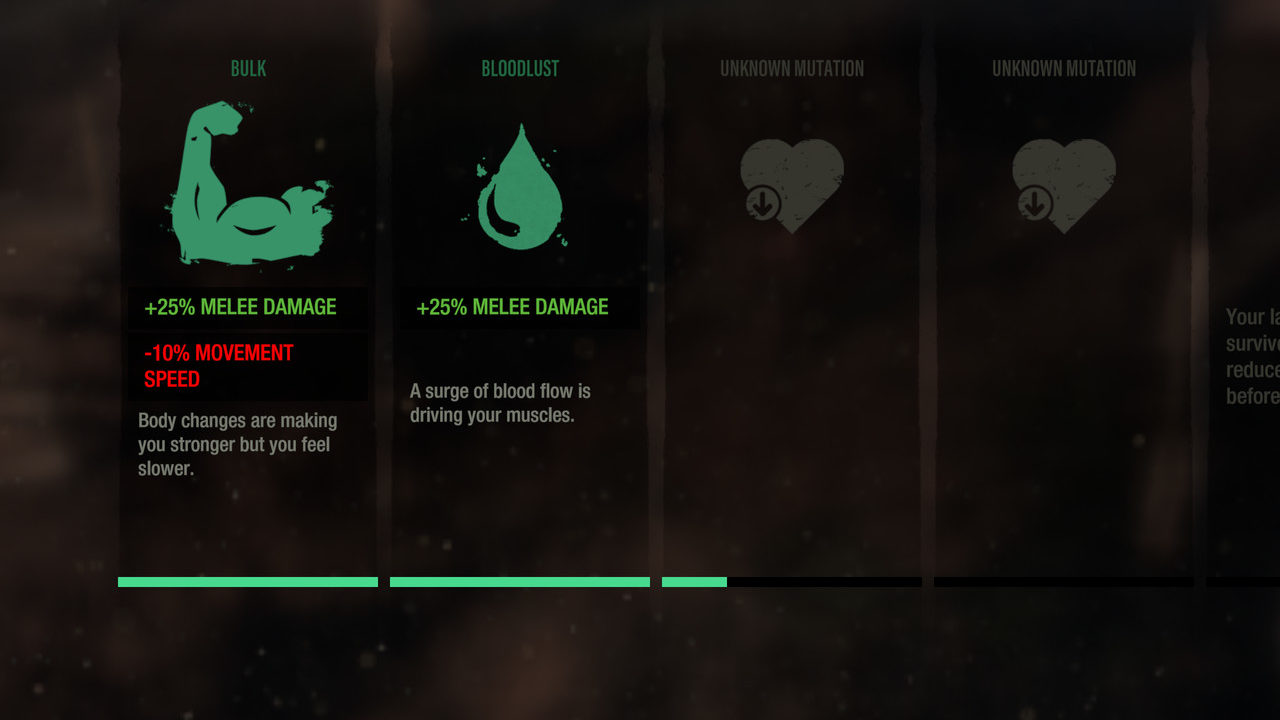
You Either Die A Hero…
…or you live long enough for a horribly debilitating virus to consume your body and turn you into a mindless, infection-spreading husk. Swings and roundabouts, eh? But just because you’re infected, it doesn’t mean you can’t go out swinging.
In fact, the infection running rampant through a volunteer’s veins will actually offer perks at certain times. Each time it the mutation hits a depleted block of the health bar, players will be offered a perk. These are some that are standard and beneficial, like improved stamina. Others, for instance, offer more melee strength at the cost of overall stamina. It seems odd, but it does play into the whole “turning into a zombie” vibe.
Using an antiviral will halt the viruses progression, which will obviously halt mutations. See it as a kind of hail Mary: you’re dying, you may as well make the most of some extra powers as you go down swinging. It’s just whether players want to do it sooner, without antiviral, or hold out that little bit longer.
Or do what I’ve inadvertently done a couple of times; accidentally shoot an explosive object you didn’t see because the camera doesn’t rotate.
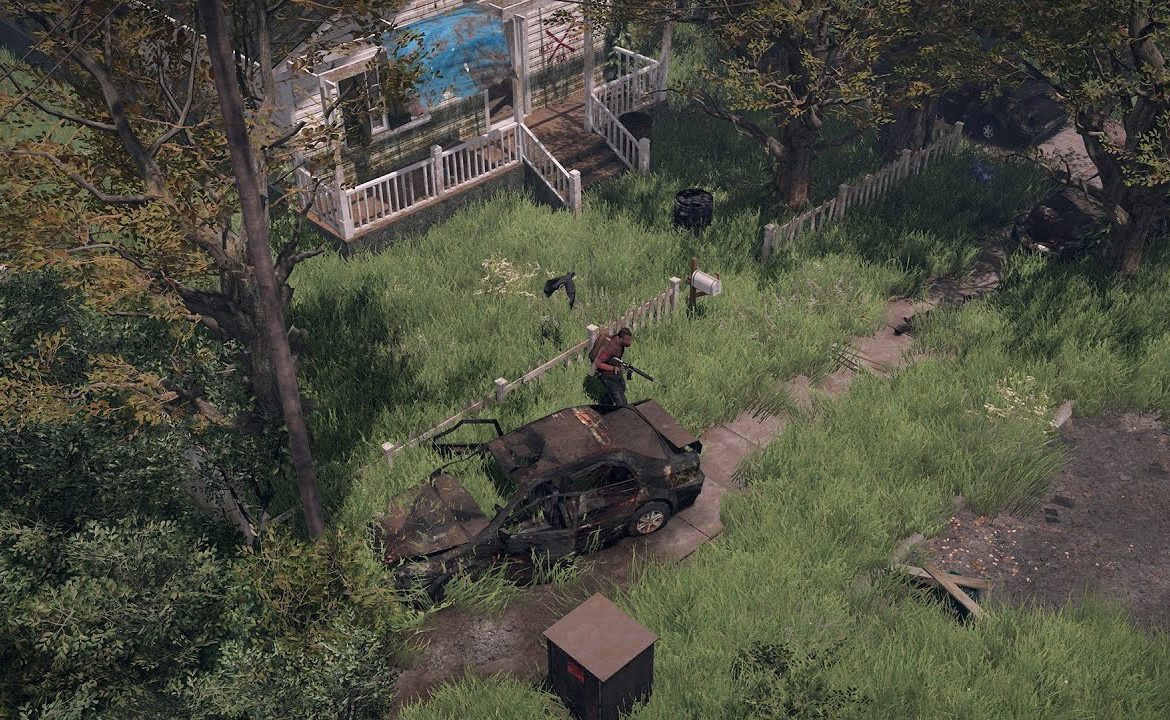
A Scope Of My Surroundings
Given the nature of a survival game, it’s expected to have moments of panic and despair. However, it’s not normally at the expense of the camera. The Last Stand has a static camera angle, much like controversial game Hatred did, as well as a similar “see through walls” mechanic. If players are used to it, then this will suit them fine. But if they’re not familiar with this type of game, or tactical RPG’s or similar perspective games, it may come as a shock.
But that’s not a detraction of the experience. What can be, however, are the minor graphical tears and slowdown that occasionally plagues each run. This is meant to be the optimised PS5 experience, and even with great loading times, screen tearing shouldn’t be as rampant. It sounds like a niggle, but when it’s happening with more Infected on screen, which is a prominent feature of the tense combat, it can be annoying.
The other issue I found was that the randomisation of the volunteers can sometimes be broken. I had a bald, bearded chap named Joseph on one run, armed with Uzi and a leather jacket. When he died, I had the same character to choose from next time. Either they were twins whose parents lacked the imagination for a second name, or the game “forgot” to generate something different.
What can be a detraction, however, is the repetitive nature of the gameplay after a fashion. Again, I’m fine with it as I am a changed man when it comes to roguelikes. So I know to expect repetition and the same decor over and over (currently at ninety hours on Hades), but some might not. Of course, that can be said for any video game you play after a while.
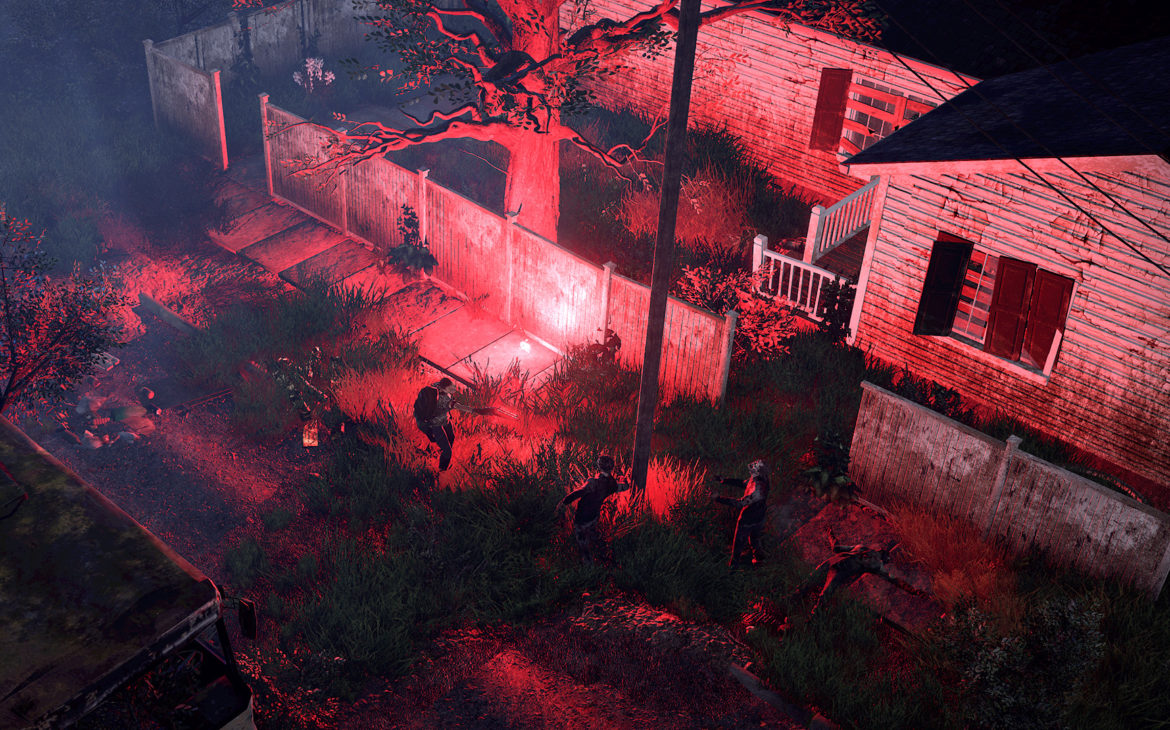
Walking With Death By My Side
Like any roguelike/lite, The Last Stand takes time to get into. Initially, I thought the game was too overbearing with what it was trying to do. The Left 4 Dead back-and-forth for fuel, the Last of Us hoarding and crafting, the repetitive grind of Hades… it does seem there’s a lot going on here. In those opening few hours, with many deaths, it does seem like a daunting task.
However, and here’s the recommendation, once players start building up skills and a degree of toughness, it starts to click. The story is piecemeal, like watching ten minutes of a Walking Dead episode a week. It won’t be drip-fed to you, you’ll have to get better at the game to find out what’s going on. But that’s a good thing: persevering through the trials and tribulations of the zombie infected apocalypse will uncover what went down.
Personally, I like the odd twinstick shooter. Gatling Gears, Dead Nation, Ruiner… they’re all on my played list. That was what drew me in to The Last Stand, thinking it was a simple arcade affair. But then, as it opened up into something more, a much more expansive title, I was invested. Whilst it’s hard to get invested into each volunteer personally, as they die frequently, the overall story/experience is worth discovering.
It may not be for those that are burnt out from zombie games, but look beneath that. It could be Martians invading under the same type of template, that part is interchangeable. Look past the generic veneer, however, and there’s a surprisingly deep roguelike to get into here.
What looks like a simple arcade affair, The Last Stand opens up into a much deeper roguelike adventure. It seems like it’s putting a lot of eggs in one basket, but once it pans out and you get used to it, it’s a very engrossing game. Just don’t get too fond of the volunteers, they don’t stick around long enough to form a bond with.

The Last Stand: Aftermath is available now on PlayStation 4 & 5 (reviewed on latter), Xbox One and Series S|X and PC.
Developer: Con Artist Games
Publisher: Armor Games Studio
Disclaimer: In order to complete this review, we were provided with a promotional copy of the game. For our full review policy, please go here.
If you enjoyed this article or any more of our content, please consider our Patreon.
Make sure to follow Finger Guns on our social channels –Twitter, Facebook, Twitch, Spotify or Apple Podcasts – to keep up to date on our news, reviews and features.
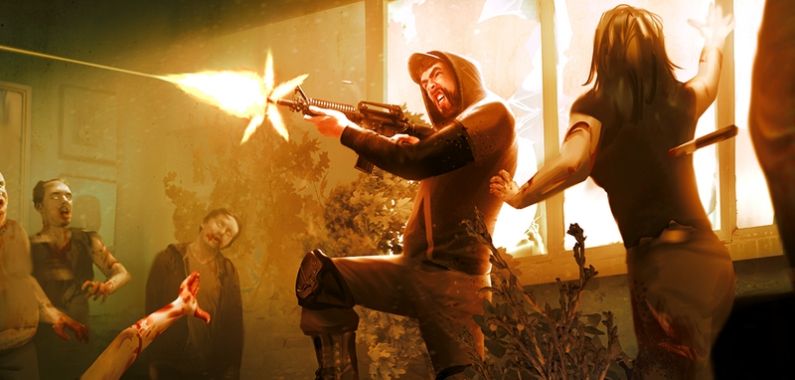



Hi Greg,
Can you remember (I know it was 4-5 months ago now) whether the PS5 version was 60fps for you? I swear the entire game is 30fps but Amor Games are telling me it’s not. I’ve booted up multiple similar games (Dysmantle, How To Survive 1-2, etc) that run at 60fps and the difference is night & day.
Cheers.